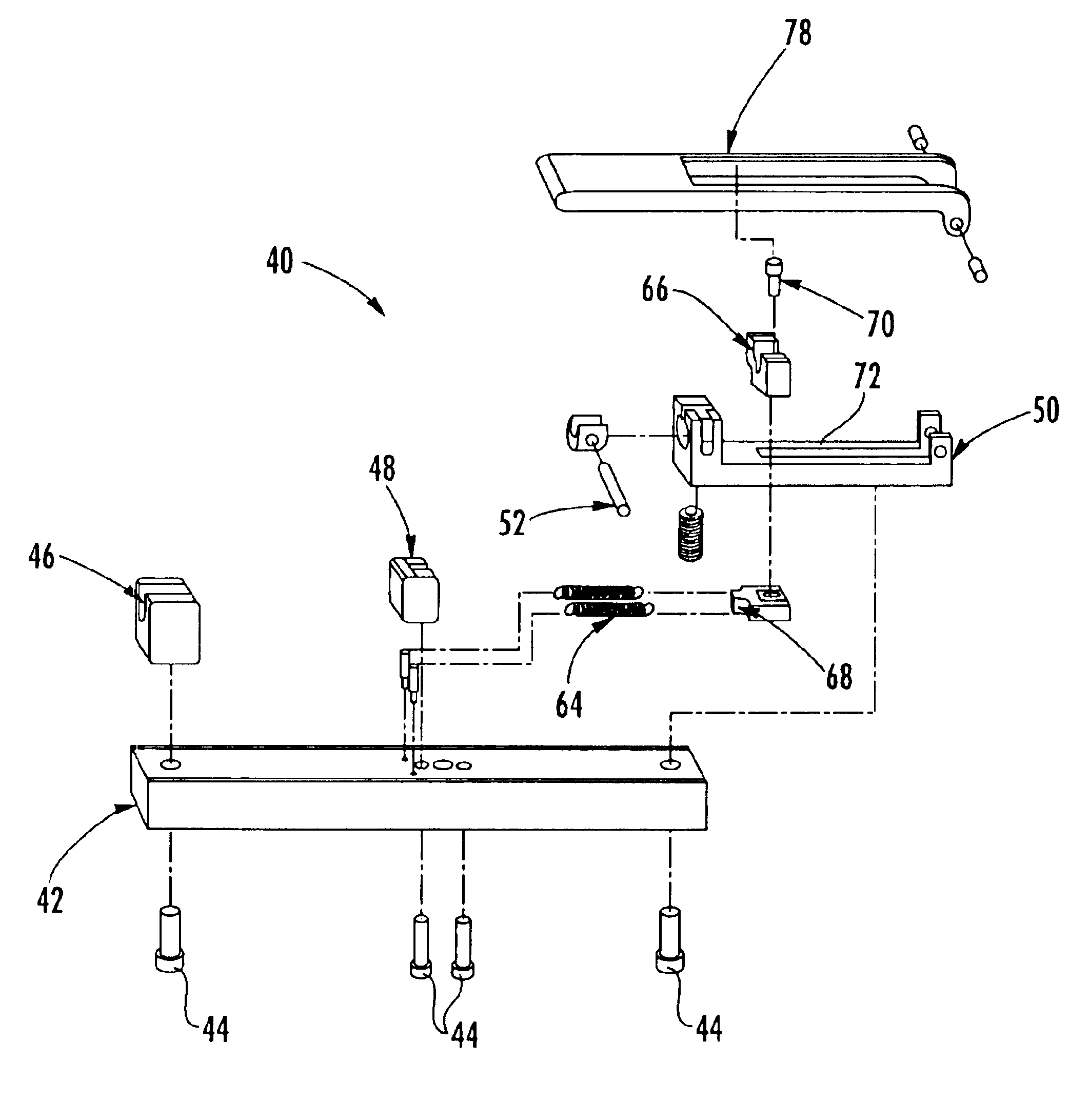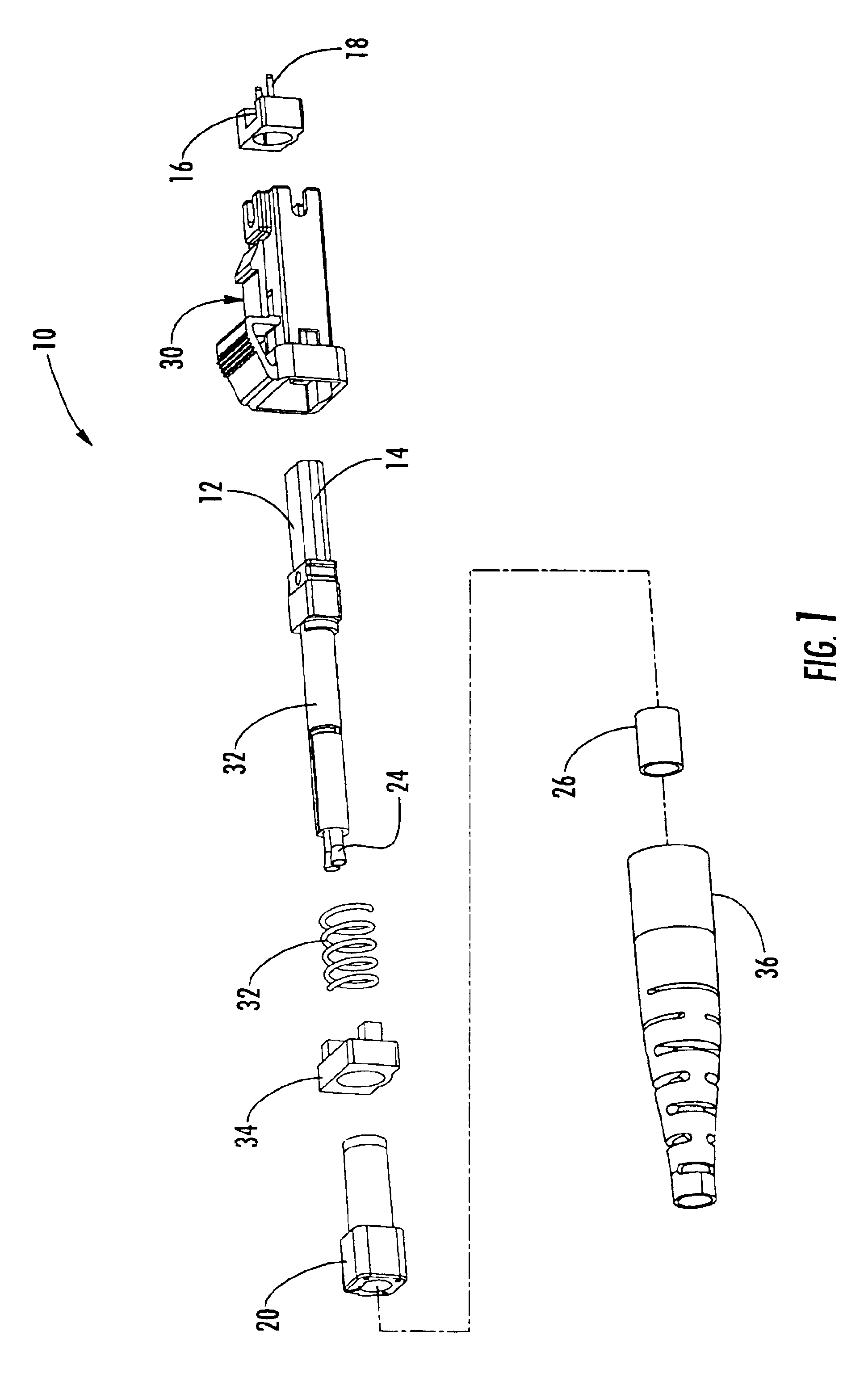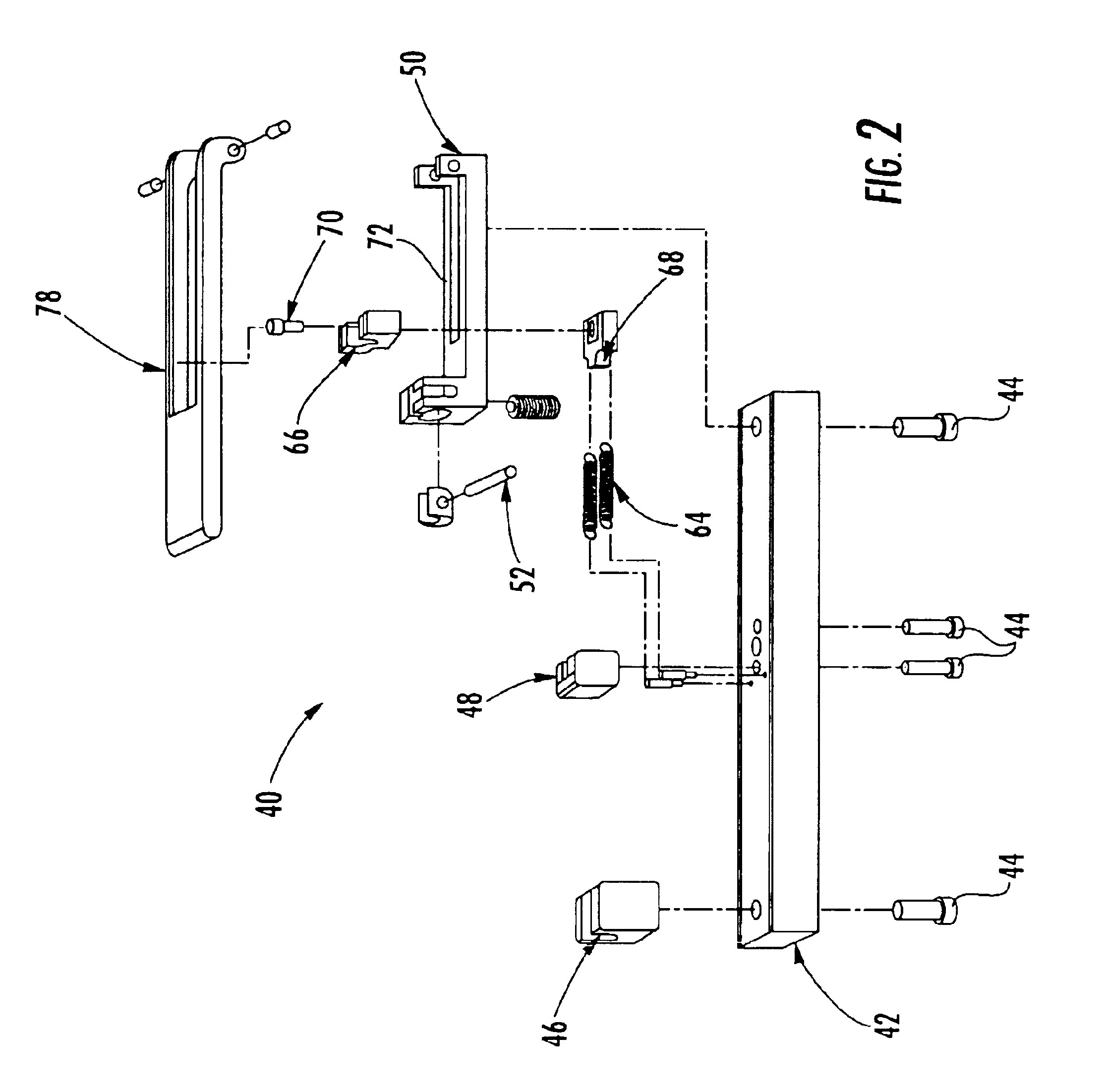Multifiber connector, installation tool and associated methods of validating optical fiber continuity
a multi-fiber connector and optical fiber technology, applied in the field of connecting optical fibers, can solve the problems of deactivation of the cam mechanism, optical field fiber and optical fiber stub, etc., and achieve the effect of facilitating the rapid repositioning of optical field fibers
- Summary
- Abstract
- Description
- Claims
- Application Information
AI Technical Summary
Benefits of technology
Problems solved by technology
Method used
Image
Examples
Embodiment Construction
[0030]The present invention now will be described more fully hereinafter with reference to the accompanying drawings, in which preferred embodiments of the invention are shown. This invention may, however, be embodied in many different forms and should not be construed as limited to the embodiments set forth herein; rather, these embodiments are provided so that this disclosure will be thorough and complete, and will fully convey the scope of the invention to those skilled in the art. Like numbers refer to like elements throughout.
[0031]A method is provided according to the present invention for validating the continuity of one or more optical field fibers with respective optical fiber stubs carried by a fiber optic connector mounted upon end portions of the optical field fibers. While the method of the present invention can be utilized to perform continuity testing following the mounting of a variety of different fiber optic connectors upon the end portions of the optical field fib...
PUM
 Login to View More
Login to View More Abstract
Description
Claims
Application Information
 Login to View More
Login to View More - R&D
- Intellectual Property
- Life Sciences
- Materials
- Tech Scout
- Unparalleled Data Quality
- Higher Quality Content
- 60% Fewer Hallucinations
Browse by: Latest US Patents, China's latest patents, Technical Efficacy Thesaurus, Application Domain, Technology Topic, Popular Technical Reports.
© 2025 PatSnap. All rights reserved.Legal|Privacy policy|Modern Slavery Act Transparency Statement|Sitemap|About US| Contact US: help@patsnap.com



